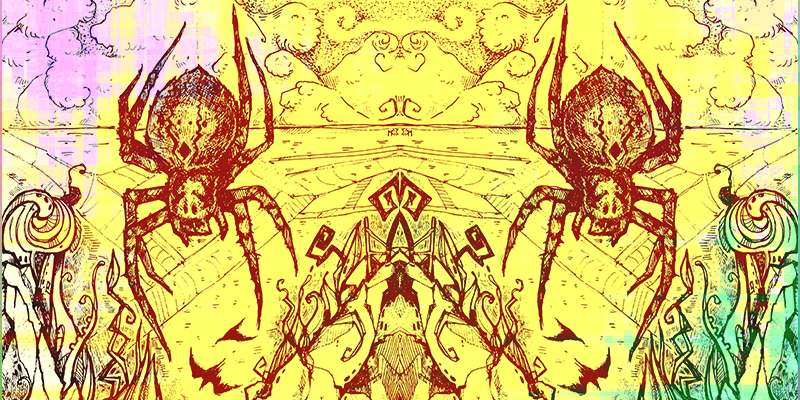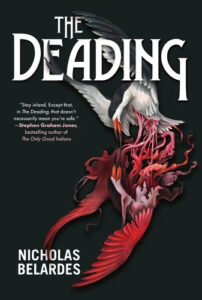Our expedition, if you could call it that, was to find a whale head.
The very idea of seeking out a head is surreal, odd, enticing, terrifying. It conjures both sad and monstrous imagery. We feel the pain of loss. We may see the horror of decay. Right away we ask questions, mainly: what will we see? Add a pristine sandy beach filled with marshmallowy snowy plovers, cute seaducks, and lone fishermen staring at the blue-green horizon line. Whale heads don’t seem to belong.
Often the surreal in nature is comprised of smaller things, the kind you don’t want crawling up your pants. A plague of frogs, crickets, ladybugs, caterpillars, and one time, a plague of black widow spiders crawling in a two-foot-wide column as if pulled by a hivemind down a California city street. Millions of them. They were all over my shoes. The horror, the horror.
The surreal in nature is real.
When you live near a coastline, you can find other plagues: thousands of moon jellies, millions of by-the-wind sailors (velella velella) washing onto beaches like tiny, sticky blue hats, salp floating in long spiral chains. Even a dolphin superpod can feel like a plague of joy.
Beaches are special. We’re drawn to them for the good feelings they conjure. But there’s something under that sandy skin, a place of mystery where things come to expire or wash up dead. Seems there’s always something half eaten deposited by a high tide, seals, sea lions, stingrays, scoters, sheep crabs, loons, grebes, mola mola, dolphin, porpoise, cormorants, or like the morning I didn’t take a walk on my morning route and a human corpse was discovered. If I’m honest, would I have looked? I have plenty of imagination for this kind of thing. But what would I have seen?
The beach holds plenty of other horror and dread. Seems there’s always some gull perched atop a seal carcass as if it alone took down the beast. Another time my grisly discovery was a human artifact, a soggy journal peering from a clump of seaweed. I turned to a page that read: If I kill myself in here they’ll wheel me out in a body bag & mom won’t have to see my brains all over the shower wall. All I could gather was a young woman wrote those words. Had she then swum toward the horizon never to return? Did she toss her journal from a boat? Off a pier? Or just leave it on the beach for the tides to toy with?
Eco-horror is our collision with the natural world.
Primary ingredients include human elements that reflect our intentions toward nature, good and bad. This is easy through the lens of history, researching biologist and corporate attitudes toward nature as both resource and dumping ground. Take a boat ride to the Channel Islands and you’ll pass ominous oil platforms, slicks wispy on the surface. Stand on the beach and they’ll appear distant mechanical monsters. Research ornithology and you’ll find racist white men like John James Audubon who dug up indigenous skulls, lied about bird discoveries, and shot feathers from the sky in order to study them.
The history of man and nature is vile. If horror is the literature of fear, then eco-horror is perhaps the literature of confronting the damage we’ve done to the natural world. The surreal in this is both the strange reality of what we’ve done, what we’ve experienced, and what we can imagine. Surrealism in literature blends strange realities with our imagination. We craft our stories as a way to overcome contradictions by creating strange new juxtapositions, by combining seemingly unrelated images in a dream-like way: the whale head on the beach near those puffball plovers, the suicide-themed journal telling us to throw ourselves away in the very place nature coughs up its remains.
The whale head was said to be at the mouth of Oso Flaco Creek. We walked from the parking lot down a short road, crossed Oso Flaco Lake on a boardwalk, then followed the winding boardwalk another half mile to the creek mouth. We could smell the pungent, rotting head before we reached sand. The head itself, a few barnacles still visible, faced southeastward, as if it had wriggled its way onto the beach, as if it wanted to join us in the parking lot. Much of the skin and flesh had been eaten, its brain or sinus cavity laid open, revealing pools of a syrupy yellowish liquid. Part of its jaw was missing. And it was far onto the beach, higher than I thought the tides could reach. Or had someone, something dragged it?
Questions abounded. The most obvious: Where was the body? What killed it? Sharks? Orca? Man? Was it us, again? Others: Was the cetacean a gray or humpback? Likely a gray. They’ve been through two mortality events off the California coast since 2000. The latest starting in 2018 lasted about four years, and it was during this time we went to see the head.
Research helps us dig deeper, question whether overcapacity or climate change was the reason for the whale’s death. I’d put my money on climate change, ocean warming (heated ocean blobs greater than strings of underwater nuclear blasts), or how about the little-known history of toxic waste (DDT, etc) and low-level radioactive waste dumped off the Southern California coast between the 1947-1982? The Los Angeles Times “Climate California” section has revealed that waste is still sitting there, leaking. And I’m guessing this could be within the migratory paths of gray whales. According to the LA Times, David Valentine, member of a UC Santa Barbara research team studying methane seeps, said it gave him chills once he decoded the unusual underwater signals. He now says about his horrific discovery of so many leaking barrels, “This is a classic situation of bad versus worse.”
*
A dust storm blasts into a facility where scientists have been studying bonobos ape behavior in the last third of Audrey Schulman’s 2018 dystopian novel Theory of Bastards. The storm is vivid, dangerous, feels simultaneously real and surreal. “Like death or anesthesia, an inching thief . . . she imagined all that dirt, that dust . . . thousands of feet of it . . . the sheer weight of it all.”
Those scenes spark cinematic and historic references to the Dust Bowl. John Steinbeck’s first chapter of The Grapes of Wrath may come to mind, so many word choices of dust and dirt and wind. A deeper dive and we learn this is what happens when drought overtakes semi-arid, over-used agricultural lands, when grasslands that would typically trap topsoil have been plowed away, and if not planted and watered, can leave hundreds of square miles open to the ravages of drought and sun. Winds sweep the loosened dirt into plumes as if Vesuvius itself has let loose its ashy innards.
I have a similar triggering experience from childhood: the “Southern San Joaquin Valley Dust Storm of 1977.” Its sustained winds, a category one hurricane. Its gusts at just under two hundred miles per hour, if sustained, would have been considered category five. This wasn’t me as an adult seeking out a whale head. This was just me, a kid, terrified while the sun turned orange, then red, then disappeared altogether. Dust whipped through every crevice and entered my lungs. Valley fever rates skyrocketed in both humans and dogs. Our neighborhood felt like a disaster movie. The clown head atop my favorite toy store ripped off, rolled who knows where.
I think the power in crafting eco-horror means triggering these kinds of sensations within ourselves. That desperation, that uncertainty, that can’t-be-real feeling that nature has revealed, or unleashed.
A recent New Yorker cartoon depicts someone saying from the shadows, “I’m just lying here quietly in the dark trying to minimize my carbon footprint.” The cartoon speaks to an individual’s guilty feelings, one person’s climate awareness. But the cartoon also tells us that collective guilt isn’t shared by all. It funnels the guilt down to an individual when it should also be communities, corporations, governments . . . It reveals not only a helplessness, but a communal paralysis. Doing nothing and sitting in the dark accomplishes what? How do we craft that? Maybe in communal-themed tales where risk is high, where we are to blame for some kind of damage being done to nature and to ourselves.
Toxic waters, dust storms, gray whale deaths, are simply a few puzzle pieces out of thousands. In our collective denial, or dismissiveness, maybe amnesia, we seem to be saying, I have all these puzzle pieces . . . I’m confused, what’s this telling me?
We forget the pieces aren’t confusing at all. The puzzle picture is right there on top of the box, a big, greyed-out, washed-out planet Earth. Man-made decay on a scale we don’t want to imagine unless it’s Twister 4 or Armageddon 7. But if you choose to write eco-horror, you can’t sit in the dark or deny the picture on the box. You have to see the entirety. You can’t turn away. You have to be drawn to it, like that whale head.
***


















